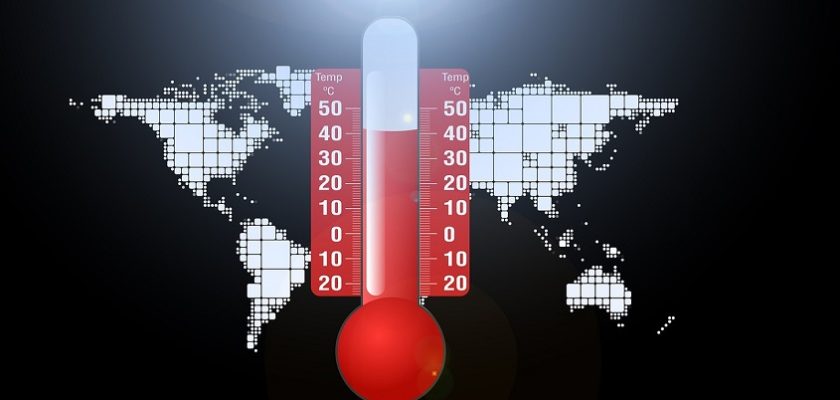The Effects of Climate Change on Global Weather Patterns and Natural Disasters
- Posted on January 10, 2023
- By Vishakha Yadav
- Read 3 minutes

Climate change refers to long-term shifts in temperature, precipitation, and other measures of the Earth’s climate. These shifts can be caused by natural factors, such as changes in the sun’s intensity or volcanic eruptions, but the term “climate change” is most often used to refer to the changes that are caused by human activity.
The main cause of climate change is the increase in greenhouse gases in the Earth’s atmosphere, caused by activities such as burning fossil fuels, deforestation, and industrial processes. These gases trap heat in the atmosphere, causing the Earth’s average surface temperature to rise. The burning of fossil fuels, such as coal, oil, and natural gas, is the primary source of these greenhouse gases. Other human activities, such as agriculture and land use changes, also contribute to the increase in greenhouse gases.
The effects of climate change are being felt around the world, and include more frequent and severe heatwaves, droughts, and storms, as well as rising sea levels. These changes are expected to have significant impacts on human communities, as well as on ecosystems and biodiversity.
The effects of climate change on global weather patterns
Climate change can have a wide range of effects on global weather patterns, including:
More frequent and severe heatwaves: As the Earth’s average surface temperature increases, heatwaves are becoming more common and more intense. These heatwaves can lead to heat stroke, dehydration, and other heat-related illnesses.
Droughts: Climate change can lead to more frequent and severe droughts in some regions, as rising temperatures lead to increased evaporation and decreased precipitation. Droughts can have serious consequences for agriculture and drinking water supplies.
Storms: Climate change may lead to more frequent and severe storms in some regions, including hurricanes, typhoons, and cyclones. These storms can cause significant damage to infrastructure and communities.
Flooding: As the Earth’s average surface temperature increases, sea levels are rising. This can lead to more frequent and severe flooding in coastal areas.
Changes in precipitation patterns: Climate change can lead to changes in precipitation patterns, including increases in some regions and decreases in others. This can have significant impacts on agriculture and water resources.
The effects of climate change on natural disasters
Climate change can have a number of effects on natural disasters, including:
More frequent and severe heatwaves: As the Earth’s average surface temperature increases, heatwaves are becoming more common and more intense. These heatwaves can lead to heat stroke, dehydration, and other heat-related illnesses.
Droughts: Climate change can lead to more frequent and severe droughts in some regions, as rising temperatures lead to increased evaporation and decreased precipitation. Droughts can have serious consequences for agriculture and drinking water supplies.
Storms: Climate change may lead to more frequent and severe storms in some regions, including hurricanes, typhoons, and cyclones. These storms can cause significant damage to infrastructure and communities.
Flooding: As the Earth’s average surface temperature increases, sea levels are rising. This can lead to more frequent and severe flooding in coastal areas.
Wildfires: Rising temperatures and changes in precipitation patterns can lead to an increase in the frequency and severity of wildfires in some regions.
Conclusion
Summary of main points: Climate change refers to long-term shifts in temperature, precipitation, and other measures of the Earth’s climate. The main cause of climate change is the increase in greenhouse gases in the Earth’s atmosphere, caused by activities such as burning fossil fuels, deforestation, and industrial processes. The effects of climate change are being felt around the world, and include more frequent and severe heatwaves, droughts, and storms, as well as rising sea levels. These changes are expected to have significant impacts on human communities, as well as on ecosystems and biodiversity.
Discussion of future projections and possible solutions: The future impacts of climate change are difficult to predict with certainty, but it is clear that continued emissions of greenhouse gases will lead to further warming and more severe impacts. To address climate change, it will be necessary to significantly reduce global greenhouse gas emissions, through a combination of measures such as transitioning to renewable energy sources, improving energy efficiency, and protecting and restoring carbon sinks like forests.
Call to action for addressing climate change: Addressing climate change will require action at all levels, from individuals to governments. Individual actions, such as reducing energy consumption and supporting clean energy sources, can make a difference. Governments also have a role to play in implementing policies that reduce greenhouse gas emissions and support the transition to a low-carbon economy. It is important for all of us to take action now to address climate change and protect the planet for future generations.
